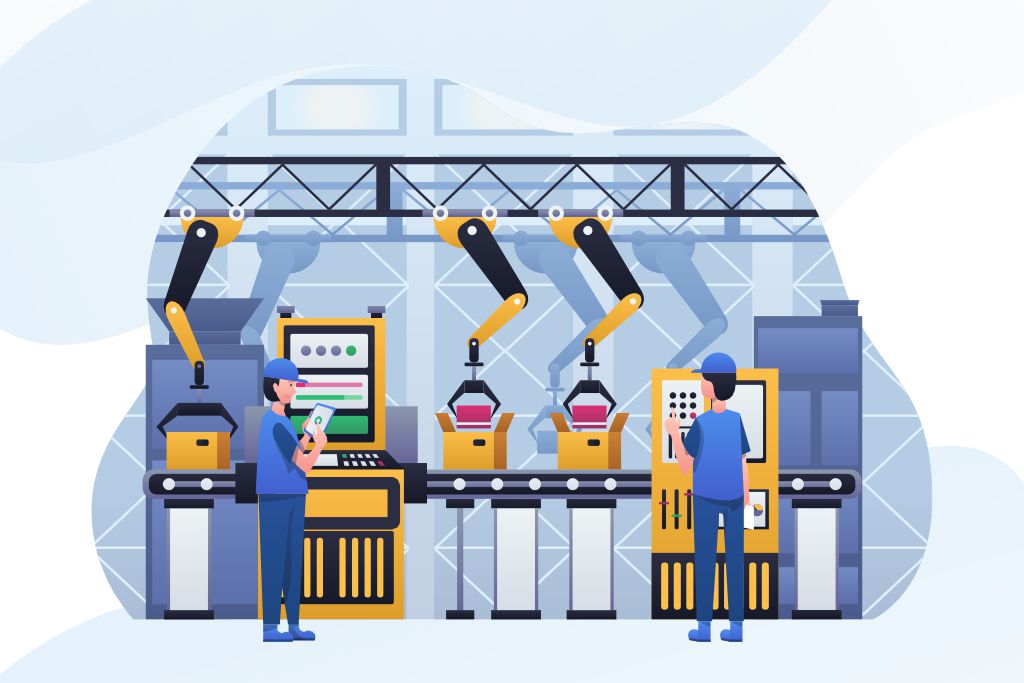India has recently focused on skill development to boost the economy and raise youth employment rates. Closing the skills gap, improving employability, and providing clear career opportunities are the goals of the National Skills Qualifications Framework (NSQF) and the National Skill Development Corporation (NSDC), two significant initiatives established by Government of India.
According to the 2015 Report on National Policy on Skill Development and Entrepreneurship, the percentage of formally skilled workers in India was a mere 4.7%. Many students are not learning the skills that businesses need. Most of the time, educational institutions focus on teaching theory over the practical knowledge required for employment. As a result, many graduates lack practical skills necessary to perform their duties, creating a skill gap.
A recent survey by National Statistical Office (NSO) has revealed that around 12.6% of students drop out of school in India, 19.8% discontinued education at the secondary level, while 17.5% dropped out at the upper primary level. Children in certain families leave school because they wish to work and help their families to make money. Sometimes college students lose interest and leave because they lack hobbies or because the lessons, they may be learning from their teachers aren’t always applicable to their future careers. Certain faculties, particularly those in rural areas, lack adequate training, facilities, and resources, which may cause students to want to leave. Based on the recently released data from the Center.
According to the Ministry of Statistics and Programme Implementation (MoSPI), the country’s unemployment rate (UR) reached 5.1% in April 2025 for people aged 15 and up, with men having a slightly higher rate (5.2%) than women (5.0%). Many young people lack the skills that companies need, even after graduating. They have a hard time finding work because of this. Many people are looking for work, but there aren’t enough jobs in their areas of residence or in the fields for which they have received their education.
- Economic slowdown: Businesses may reduce their rental income or even remove employees from organization when things are not going well, which raises the unemployment rate.
- Job mismatch: Although there may not be many job openings in their fields, some people have levels in those fields that are good for them. They may lack the required skills or be overqualified for different job roles.
Due to a lack of career guidance, many students are not aware of the types of careers they can pursue. They typically choose the same career paths as others or what their families want them to pursue because they are unaware of the different career options available to them, such as technical, skilled trades, or small-scale business.
Career guidance services that help college students assess their options and make the best decisions for their future may be lacking in schools.
Importance of Vocational Education
slightly higher rate (5.2%) than women (5.0%). Many young people lack the skills that companies need, even after graduating. They have a hard time finding work because of this. Many people are looking for work, but there aren’t enough jobs in their areas of residence or in the fields for which they have received their education.
- Economic slowdown: Businesses may reduce their rental income or even remove employees from organization when things are not going well, which raises the unemployment rate.
- Job mismatch: Although there may not be many job openings in their fields, some people have levels in those fields that are good for them. They may lack the required skills or be overqualified for different job roles.
Due to a lack of career guidance, many students are not aware of the types of careers they can pursue. They typically choose the same career paths as others or what their families want them to pursue because they are unaware of the different career options available to them, such as technical, skilled trades, or small-scale business.
Career guidance services that help college students assess their options and make the best decisions for their future may be lacking in schools.
Importance of Vocational Education
According to study of “Vocational Education in the Light of NEP 2020” (Dr. Gitika Saharia1, Supriya Mazumdar) shows that despite efforts to strengthen workforce training, formal vocational education among Indian workers aged 19–24 remained significantly low during the 12th Five-Year Plan (2012–2017), with less than 5% receiving any formal training. In contrast, vocational education enrollment rates were much higher globally—52% in the United States, 75% in Germany, and an impressive 96% in South Korea. These disparities highlight the urgent need for India to expand vocational education and enhance workforce readiness to align with international standards.
Vocational education plays a crucial role in equipping individuals with specialized skills necessary for career growth, particularly in today’s technology-driven economy. Practical expertise, alongside formal degrees, is vital for employability, especially for engineering graduates, who often require additional certifications to remain competitive in the job market. Recognizing this necessity, India has actively promoted skill development programs aimed at producing job-ready professionals. By 2019–2020, vocational course enrollment had exceeded 15.2 million students (AISHE, 2020), underscoring efforts to bridge skill gaps and align education with industry demands.
Globally, various initiatives have been launched to advance vocational training (Dar, 2008; World Bank, 2017). According to the Organization for Economic Co-operation and Development (OECD, 2021), one in three young adults holds a vocational qualification, with most students enrolling in upper secondary programs. Such training is vital for workforce development across nations. However, India still lags, with only 7–10% of the population receiving formal vocational education (World Bank, 2017). Expanding access to skill-based training could help address workforce deficiencies and meet evolving industry needs.
To capitalize on its young workforce, the Indian government has prioritized vocational education, ensuring students acquire practical knowledge and industry-relevant skills (Agrawal, 2014). Strengthening vocational training initiatives remains essential for shaping a competent and skilled labor force, ultimately boosting employability and economic growth.
The Indian government established the National Skill Development Corporation (NSDC), which was established in 2008 and given in evaluating new skills to protect better employment. The organization develops programs that give people the skills they need for a range of jobs, including manufacturing, healthcare, and technology, in partnership with special training facilities, organizations, and government agencies. Additionally, NSDC supports these training facilities by providing funding to help them grow and advance. The main goal of NSDC is to help individuals in obtaining appropriate training and employment.
The Indian government launched the National Skills Qualifications Framework (NSQF) in 2013 to assess and prepare the nation’s workforce’s skills and qualifications. People will have a clear path to study and advance in their careers if education and skill training are aligned with the demands of various jobs. When it comes to curriculum of field, the skills and abilities needed for various jobs, the Qualification Pack (QP) plays a critical role. A Qualification Pack (QP) is a collection of qualifications that outline the abilities, knowledge, and qualities needed to carry out a particular job role in the sector.
How Psychometric Assessments help Skill training
Psychometric assessments play a crucial role in skill training by identifying individual strengths, skill gaps, and learning needs. They provide organizations with scientific and objective evaluations of cognitive abilities and occupational personalities, enabling more effective workforce development. These assessments help tailor training programs to match an individual’s aptitude, ensuring skill-building efforts align with career goals. By understanding a person’s personality, decision-making traits, and mental capacities, psychometric tools help match them to suitable job roles, improving job readiness. Additionally, they guide educational institutions in designing personalized learning plans, ensuring skill development is targeted rather than generalized. Overall, psychometric assessments enhance training effectiveness, boost career alignment, and optimize workforce potential.
NEA Life’s Assessments
The psychometric assessments developed by NEA Life play a pivotal role in supporting government initiatives by facilitating targeted training and workforce development. These Online Psychometric Assessment empower government institutions to achieve their missions and objectives effectively, providing them with comprehensive technical support and strategic assistance, Skill Compass assessment for Sector Skill Councils (SSCs), established under NSDC’s Skill India Mission, bridge the gap between industry demands and skilling needs. These autonomous bodies develop National Occupational Standards, conduct skill gap analyses, and align training with priority sectors. Supported initially by NSDC funding, SSCs drive standardization and self-sustainable growth in India’s skilling ecosystem and The Skill Compass Profiler assessment helps individuals to identify suitable job role by evaluating their aptitude across more than 3000 job roles recommended by National Skill Development Corporation (NSDC). This assessment is evaluating compatible skills and interest of the individual to be fit in for a particular skill sector.
Also, developed The ITI Trade Fit Assessment helps individuals identify suitable courses/trade by evaluating their aptitude across 100+ trades. This assessment is exploring an appropriate level of cognitive skills and interest to pursue the career path in industrial training. The ITI Career Fit assessment is evaluating skills and personality style to suggest specific industrial 514 Job role after completing ITI diploma in the relevant industrial sector. The Industrial sector facilitates an individual to perform and apply technical skills while working in the industry. The assessment also highlights specific skill improvement needs.
CONCLUSION
Ultimately, improving the economy and assisting young people in obtaining good employment largely depend on India’s understanding of skill development. The National Skill Development Corporation (NSDC) and National Skills Qualifications Framework (NSQF) are two major initiatives to between what people are learning and what employers need. Difficulties like a lack of vocational training, poor career guidance, and perceptions against specific fields remain despite the advancements made by these applications. People need to keep learning new skills because the new world is advancing the job market.
Psychometric tests, like those developed by NEA Life Pvt Ltd, are useful for assessing people’s strengths and abilities. By matching people with suitable training programs and job roles, these assessments guarantee that they acquire the skills required for success. This makes training more effective and helps people find Job that matches his/her personality and abilities. In summary, India can enhance career growth and use tools like psychometric tests to help its workforce be better prepared, lower dropout rates, and increase job opportunities if it wants to improve its economic system.
In conclusion, India’s development initiatives, aided by methods such as psychometric assessments, aim to close the skills gap, reduce dropout rates, and enhance career opportunities by matching market demands with individuals’ abilities.






